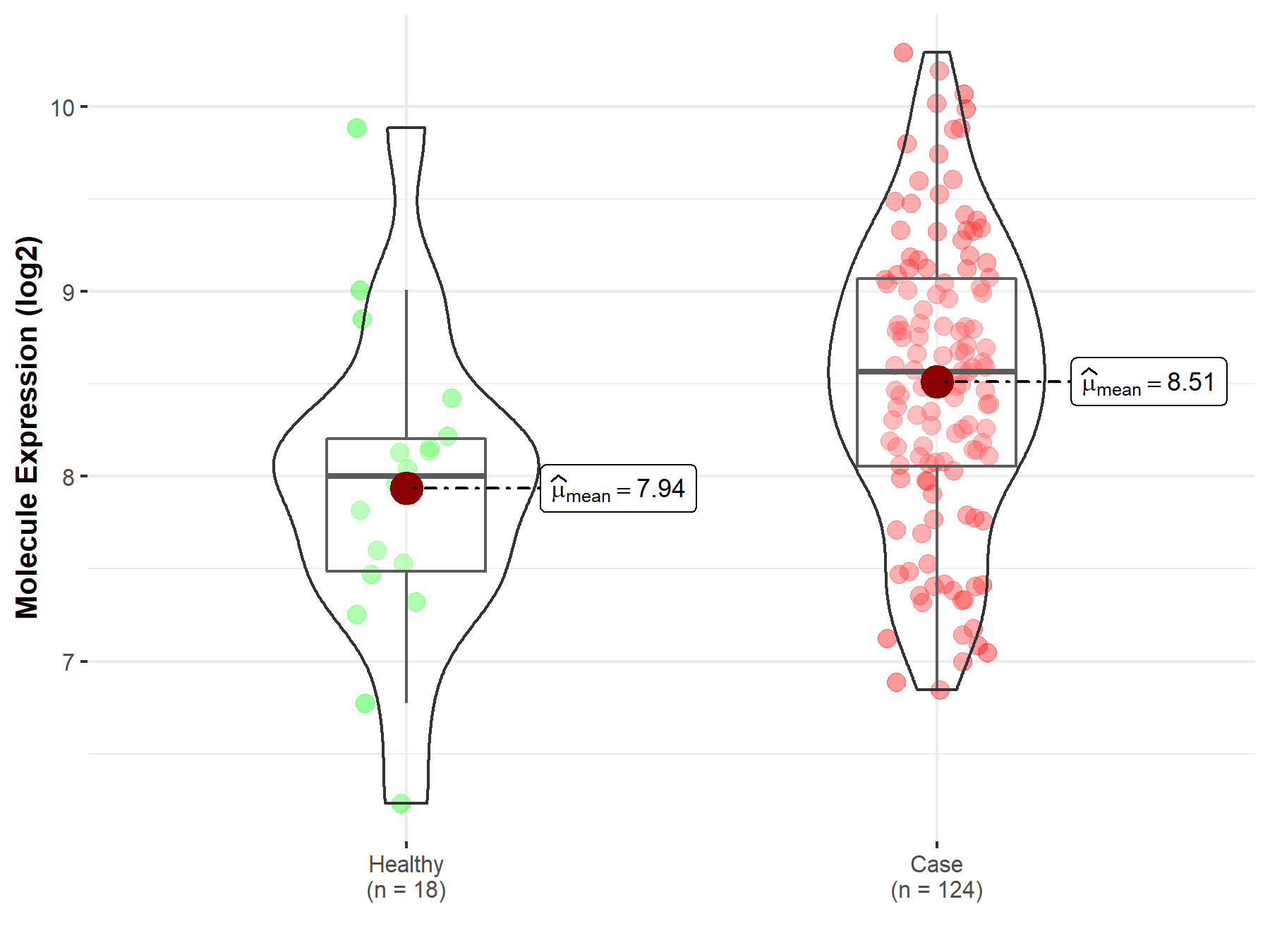Molecule Information
General Information of the Molecule (ID: Mol00602)
| Name |
Rapamycin-insensitive companion of mTOR (RICTOR)
,Homo sapiens
|
||||
|---|---|---|---|---|---|
| Synonyms |
AVO3 homolog; hAVO3; KIAA1999
Click to Show/Hide
|
||||
| Molecule Type |
Protein
|
||||
| Gene Name |
RICTOR
|
||||
| Gene ID | |||||
| Location |
chr5:38937920-39074399[-]
|
||||
| Sequence |
MAAIGRGRSLKNLRVRGRNDSGEENVPLDLTREPSDNLREILQNVARLQGVSNMRKLGHL
NNFTKLLCDIGHSEEKLGFHYEDIIICLRLALLNEAKEVRAAGLRALRYLIQDSSILQKV LKLKVDYLIARCIDIQQSNEVERTQALRLVRKMITVNASLFPSSVTNSLIAVGNDGLQER DRMVRACIAIICELALQNPEVVALRGGLNTILKNVIDCQLSRINEALITTILHLLNHPKT RQYVRADVELERILAPYTDFHYRHSPDTAEGQLKEDREARFLASKMGIIATFRSWAGIIN LCKPGNSGIQSLIGVLCIPNMEIRRGLLEVLYDIFRLPLPVVTEEFIEALLSVDPGRFQD SWRLSDGFVAAEAKTILPHRARSRPDLMDNYLALILSAFIRNGLLEGLVEVITNSDDHIS VRATILLGELLHMANTILPHSHSHHLHCLPTLMNMAASFDIPKEKRLRASAALNCLKRFH EMKKRGPKPYSLHLDHIIQKAIATHQKRDQYLRVQKDIFILKDTEEALLINLRDSQVLQH KENLEWNWNLIGTILKWPNVNLRNYKDEQLHRFVRRLLYFYKPSSKLYANLDLDFAKAKQ LTVVGCQFTEFLLESEEDGQGYLEDLVKDIVQWLNASSGMKPERSLQNNGLLTTLSQHYF LFIGTLSCHPHGVKMLEKCSVFQCLLNLCSLKNQDHLLKLTVSSLDYSRDGLARVILSKI LTAATDACRLYATKHLRVLLRANVEFFNNWGIELLVTQLHDKNKTISSEALDILDEACED KANLHALIQMKPALSHLGDKGLLLLLRFLSIPKGFSYLNERGYVAKQLEKWHREYNSKYV DLIEEQLNEALTTYRKPVDGDNYVRRSNQRLQRPHVYLPIHLYGQLVHHKTGCHLLEVQN IITELCRNVRTPDLDKWEEIKKLKASLWALGNIGSSNWGLNLLQEENVIPDILKLAKQCE VLSIRGTCVYVLGLIAKTKQGCDILKCHNWDAVRHSRKHLWPVVPDDVEQLCNELSSIPS TLSLNSESTSSRHNSESESVPSSMFILEDDRFGSSSTSTFFLDINEDTEPTFYDRSGPIK DKNSFPFFASSKLVKNRILNSLTLPNKKHRSSSDPKGGKLSSESKTSNRRIRTLTEPSVD FNHSDDFTPISTVQKTLQLETSFMGNKHIEDTGSTPSIGENDLKFTKNFGTENHRENTSR ERLVVESSTSSHMKIRSQSFNTDTTTSGISSMSSSPSRETVGVDATTMDTDCGSMSTVVS TKTIKTSHYLTPQSNHLSLSKSNSVSLVPPGSSHTLPRRAQSLKAPSIATIKSLADCNFS YTSSRDAFGYATLKRLQQQRMHPSLSHSEALASPAKDVLFTDTITMKANSFESRLTPSRF MKALSYASLDKEDLLSPINQNTLQRSSSVRSMVSSATYGGSDDYIGLALPVDINDIFQVK DIPYFQTKNIPPHDDRGARAFAHDAGGLPSGTGGLVKNSFHLLRQQMSLTEIMNSIHSDA SLFLESTEDTGLQEHTDDNCLYCVCIEILGFQPSNQLSAICSHSDFQDIPYSDWCEQTIH NPLEVVPSKFSGISGCSDGVSQEGSASSTKSTELLLGVKTIPDDTPMCRILLRKEVLRLV INLSSSVSTKCHETGLLTIKEKYPQTFDDICLYSEVSHLLSHCTFRLPCRRFIQELFQDV QFLQMHEEAEAVLATPPKQPIVDTSAES Click to Show/Hide
|
||||
| Function |
Subunit of mTORC2, which regulates cell growth and survival in response to hormonal signals. mTORC2 is activated by growth factors, but, in contrast to mTORC1, seems to be nutrient-insensitive. mTORC2 seems to function upstream of Rho GTPases to regulate the actin cytoskeleton, probably by activating one or more Rho-type guanine nucleotide exchange factors. mTORC2 promotes the serum-induced formation of stress-fibers or F-actin. mTORC2 plays a critical role in AKT1 'Ser-473' phosphorylation, which may facilitate the phosphorylation of the activation loop of AKT1 on 'Thr-308' by PDK1 which is a prerequisite for full activation. mTORC2 regulates the phosphorylation of SGK1 at 'Ser-422'. mTORC2 also modulates the phosphorylation of PRKCA on 'Ser-657'. Plays an essential role in embryonic growth and development.
Click to Show/Hide
|
||||
| Uniprot ID | |||||
| Ensembl ID | |||||
| HGNC ID | |||||
| Click to Show/Hide the Complete Species Lineage | |||||
Type(s) of Resistant Mechanism of This Molecule
Drug Resistance Data Categorized by Drug
Approved Drug(s)
3 drug(s) in total
| Drug Sensitivity Data Categorized by Their Corresponding Mechanisms | ||||
|
|
||||
| Disease Class: Cervical cancer | [1] | |||
| Sensitive Disease | Cervical cancer [ICD-11: 2C77.0] | |||
| Sensitive Drug | Cisplatin | |||
| Molecule Alteration | Expression | Down-regulation |
||
| Experimental Note | Revealed Based on the Cell Line Data | |||
| Cell Pathway Regulation | AKT/mTOR signaling pathway | Inhibition | hsa04150 | |
| Cell proliferation | Inhibition | hsa05200 | ||
| In Vitro Model | Hela cells | Cervix uteri | Homo sapiens (Human) | CVCL_0030 |
| In Vivo Model | BALB/c nude mouse xenograft model | Mus musculus | ||
| Experiment for Molecule Alteration |
Western blotting analysis | |||
| Experiment for Drug Resistance |
WST assay | |||
| Mechanism Description | Overexpression of miR-218 Inhibited Expression of Rictor, an mTOR Component, and Its Downstream Pathway, inhibited the proliferation of the human cervical cancer cell line HeLa and increased chemosensitivity to cisplatin in vitro by blocking the AkT-mTOR signaling pathway. | |||
| Drug Resistance Data Categorized by Their Corresponding Mechanisms | ||||
|
|
||||
| Disease Class: Esophageal squamous cell carcinoma | [2] | |||
| Resistant Disease | Esophageal squamous cell carcinoma [ICD-11: 2B70.3] | |||
| Resistant Drug | Nimotuzumab | |||
| Molecule Alteration | Structural variation | Amplification |
||
| Experimental Note | Identified from the Human Clinical Data | |||
| Cell Pathway Regulation | PI3K/AKT/mTOR signaling pathway | Activation | hsa04151 | |
| Mechanism Description | NGS examination of this patient demonstrated that PIK3CA mutation and a RICTOR amplification might participate in primary and acquired resistance to nimotuzumab, respectively, via the PI3K/AKT/mTOR signaling pathway. | |||
| Drug Sensitivity Data Categorized by Their Corresponding Mechanisms | ||||
|
|
||||
| Disease Class: Cervical cancer | [3] | |||
| Sensitive Disease | Cervical cancer [ICD-11: 2C77.0] | |||
| Sensitive Drug | Sirolimus | |||
| Molecule Alteration | Expression | Down-regulation |
||
| Experimental Note | Revealed Based on the Cell Line Data | |||
| Cell Pathway Regulation | Cell apoptosis | Activation | hsa04210 | |
| mTOR signaling pathway | Inhibition | hsa04150 | ||
| In Vitro Model | Hela cells | Cervix uteri | Homo sapiens (Human) | CVCL_0030 |
| Siha cells | Cervix uteri | Homo sapiens (Human) | CVCL_0032 | |
| Caski cells | Uterus | Homo sapiens (Human) | CVCL_1100 | |
| C33A cells | Uterus | Homo sapiens (Human) | CVCL_1094 | |
| In Vivo Model | Mouse bearing cervical cancer model | Mus musculus | ||
| Experiment for Molecule Alteration |
RT-qPCR | |||
| Experiment for Drug Resistance |
MTT assay; Flow cytometry assay | |||
| Mechanism Description | microRNA-218 increases cellular sensitivity to Rapamycin via targeting Rictor and reducing the level of Rictor in cervical cancer. | |||
Disease- and Tissue-specific Abundances of This Molecule
ICD Disease Classification 02

| Differential expression of molecule in resistant diseases | ||
| The Studied Tissue | Esophagus | |
| The Specified Disease | Esophageal cancer | |
| The Expression Level of Disease Section Compare with the Adjacent Tissue | p-value: 8.42E-01; Fold-change: -2.58E-01; Z-score: -4.37E-01 | |
|
Molecule expression in the normal tissue adjacent to the diseased tissue of patients
Molecule expression in the diseased tissue of patients
|
||
| Disease-specific Molecule Abundances |

|
Click to View the Clearer Original Diagram |
| Differential expression of molecule in resistant diseases | ||
| The Studied Tissue | Cervix uteri | |
| The Specified Disease | Cervical cancer | |
| The Expression Level of Disease Section Compare with the Healthy Individual Tissue | p-value: 1.16E-02; Fold-change: 5.65E-01; Z-score: 6.76E-01 | |
|
Molecule expression in the diseased tissue of patients
Molecule expression in the normal tissue of healthy individuals
|
||
| Disease-specific Molecule Abundances |

|
Click to View the Clearer Original Diagram |
References
If you find any error in data or bug in web service, please kindly report it to Dr. Sun and Dr. Zhang.
